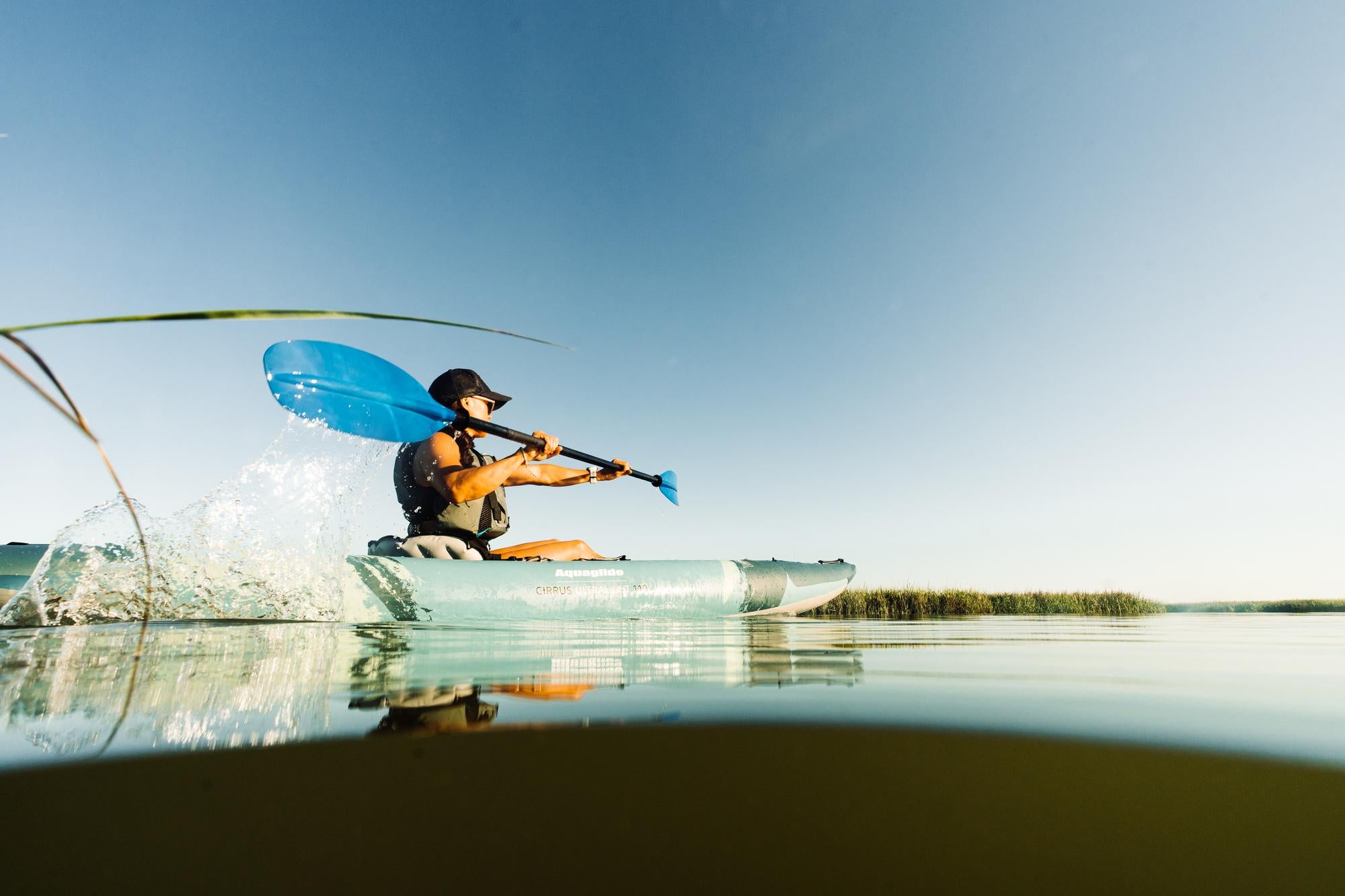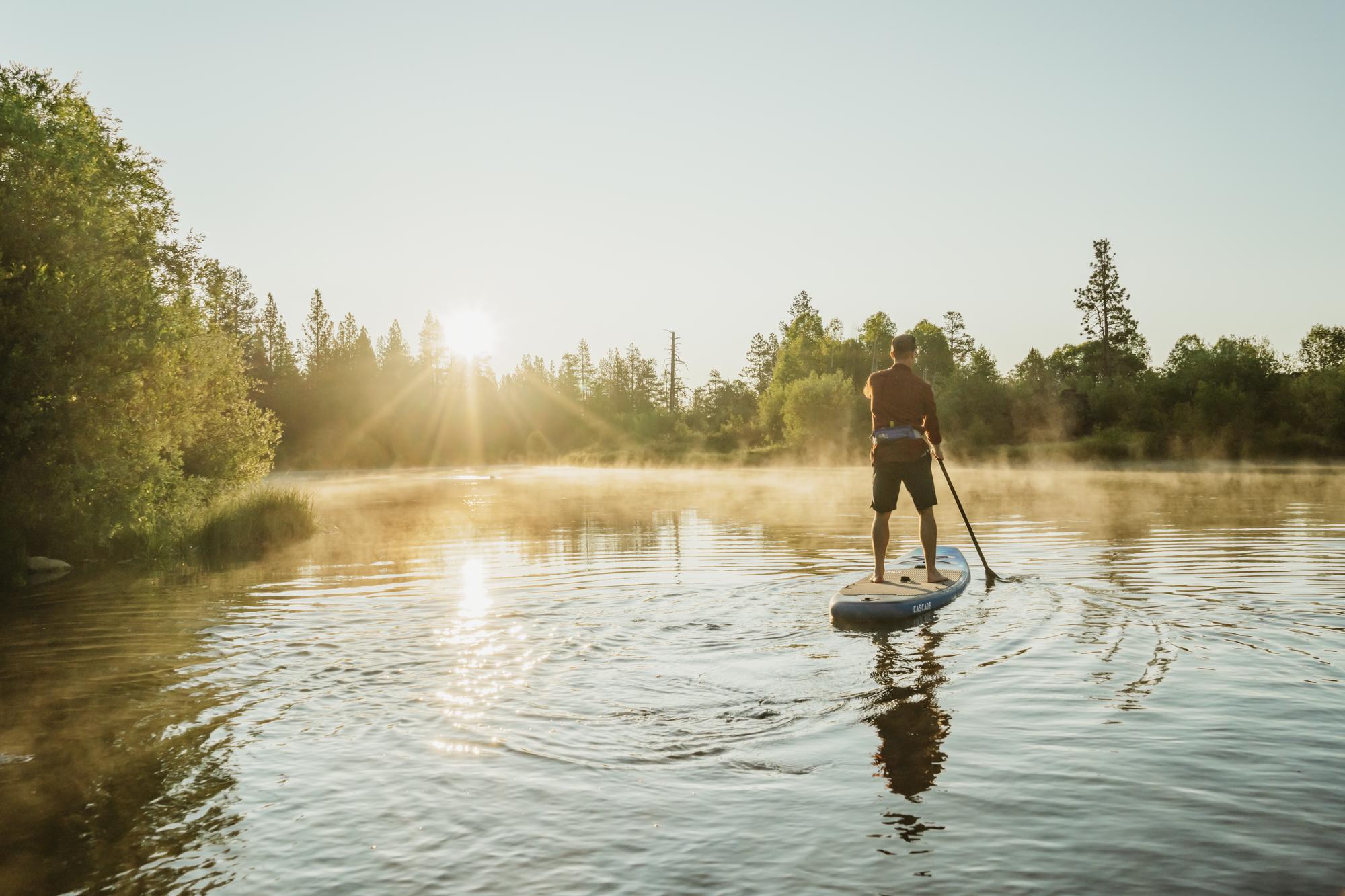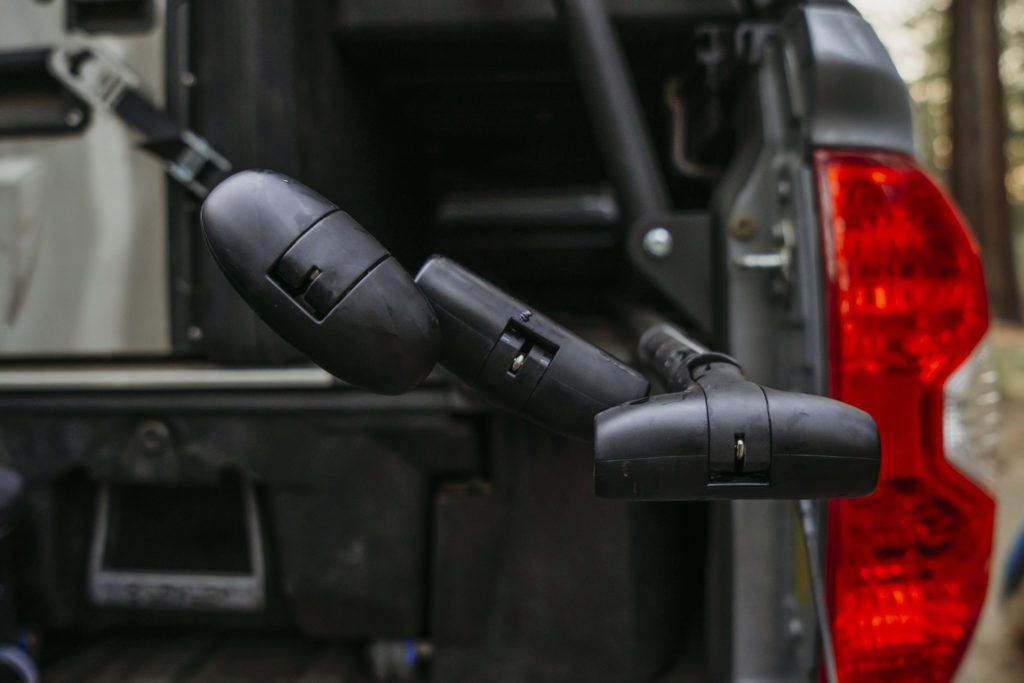How To Choose a PFD for SUP & Kayak
PFD, personal flotation device, life jacket, life vest. Sometimes those words are used interchangeably, though they are not the same. Whatever you want to call it, a PFD is an essential piece of gear for any SUPer or kayaker, which gives you buoyancy to help you stay afloat should you happen to fall in the water. While the goal is the same for all PFDs, it does make a difference in which one you choose, depending on your activity and the job it’s intended for. Get safety check ready with the following tips on how to choose a PFD for SUPing and kayaking.
- Know Your Type
Did you know there are five different types of U.S. Coast Guard-approved PFD’s? Yeah, that can feel a little overwhelming trying to narrow down which one works best for you. When it comes to SUP and kayak use, there are only a few you need to consider, but let’s dive in to all five types: Type I, II, III, IV, and V.
Type I offers maximum flotation, with a minimum of 22 lbs of buoyancy on the front of the jacket (so, you’ll be flipped face side up). Because of it’s intense buoyancy rating, this is most often used for those who may be kayaking rough waters.
Type II is designated for much calmer excursions, think tranquil waterways and glassy lakes. There is much less buoyancy than a Type I, but they are far more comfortable and maneuverable in the water.
A Type III PFD has a minimum buoyancy of 15.5 lbs and is most common for recreational activities - including kayaking and paddle boarding. A Type III PFD does not turn you right side up though, so you’ll have to get yourself in that position should you need to.
Type IV is not a worn PFD, but thrown into the water for rescue work.
And lastly, a Type V is a special use PFD with high buoyancy. This vest requires proper training in how to wear it correctly, so make sure you are well-informed beforehand if you go this route.
Let’s take a look into PFD types even further, and compare the standard versus inflatable.
A Standard PFD is your classic, non-inflatable PFD that you likely grew up wearing. Many people opt to wear these because they are inherently buoyant, which makes their ease of use, well, easy. Think of it as your bulky vest full of foam that creates buoyancy. The standard PFD is versatile and good for most water sports, including paddle boarding and kayaking. They’re easy to put on, though they feel a little bulky at times and may run hot on warm days.
An Inflatable PFD can come in the form of a waist pack or vest. Often used by avid kayakers and SUPers, the slim profile is easy to love, making for very comfortable gear that you hardly notice you’re wearing. These must be inflated to activate buoyancy, either manually or automatically. If a manual PFD, you pull a cord that activates CO2 and inflates the vest. Automatically, and once it’s submerged in water, it will inflate. The biggest thing to note with inflatable PFD’s is they do not come inherently buoyant, meaning if you are not able to activate it due to an injury, it will not inflate.
- Find Your Fit
Not all PFD’s fit the same. The device should have a weight limit clearly labeled on it. Make sure to do a size check once it’s on and all straps are harnessed. If there’s too much slack, it may be too big.
- Dog & Kid Approved
Wearing a PFD is crucial for anyone participating in water fun, dogs and kids included! A CFD (Canine Flotation Device) is a real thing, and it’s important to make sure your furry best friend has one too. This Float Coat Dog Life Jacket allows you to paddle with your pup with peace of mind, designed for dogs of all shapes and sizes.
And when it comes to kids, it’s very important to note that there is a major difference between an adult PFD and one meant for a child. There are different weight limits, and oftentimes there will be an extra strap that goes down the back, between the legs, and up for extra support.
Whatever you do, the most important thing is to wear a PFD. It’s that must-have piece of equipment if you are spending any amount of time in open water. Take the time to do your research before buying your next PFD. After all, this one piece of equipment could save your life.




